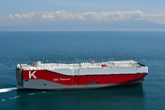Embracing the future with digital twins
Published by Jessica Casey,
Editor
LNG Industry,
In the evolving energy landscape, integrating gas with power sector operations has become a pivotal strategy. This approach, known as ‘co-optimisation’ or ‘sector coupling’, uses advanced energy modelling to ensure the security of supply and drives efficient, sustainable energy solutions. Digital twins play a crucial role in this trans-formation by enabling comprehensive and integrated modelling of both sectors within the same models and scenarios.
The role of digital twins in energy modelling
Digital twins – virtual replicas of physical assets and systems – allow energy stakeholders to unlock a more sophisticated approach to their planning and decision making. While traditional energy modelling has historically focused on production costs, capital investments, and short-term operations, the current demands of the energy landscape have precipitated a shift in emphasis towards modelling interdependent systems, federal emissions standards, and the effects of intermittent energy production. Digital twins are central to achieving these goals.
The enhanced detail offered by digital twins equips gas and LNG stakeholders with new insights to make better strategic decisions, such as those around the optimal sizing of facilities and investments in regasification or liquefaction facilities. In addition, digital twins enable the evaluation of long-haul LNG transportation alongside gas-fired generation and electricity demand within a single model, providing clarity on right-sizing assets throughout the energy value chain.
This integrated approach allows energy participants to identify blind spots in their operations, leading to more informed and effective decision making.
Strategic decisions driven by integrated modelling
Arguably the most important impact of next-generation energy modelling is that it allows for a comprehensive view of the interconnected energy landscape, encompassing both the power and gas sectors. The ability to model interdependencies between these assets is crucial for optimising resources, ensuring reliability, and meeting regulatory standards.
Recent studies highlight the paramount importance of integrated models over isolated simulations in navigating the complexities of energy transitions, which have long since moved beyond planning or creating simulations of individual standalone energy markets.
Energy Exemplar recently produced a coupled digital twin of power and gas systems by combining the New England ISO power system with the North American gas network. This is done by removing assumptions of fuel prices and limitless gas to gas-fired generators and connecting these generators directly to the gas network. This connection in a single model is forced to serve end-use gas demand while simultaneously also meeting power system demand. The outcome of this connection allows an energy system to adhere to weather assumptions, policy, build-out and retirement of generating assets, and price response. The results produce a more accurate representation of natural gas offtake in the New England region. This improved representation of fuel offtake at natural gas generators exposes a huge disparity in EIA’s 30-year natural gas demand forecast and what the output of the co-optimised model indicates.
The importance of this outcome shows that general assumptions about gas usage in the region are flat and even reducing; however, power demand assumptions, generation build-out schedules, and emissions standards indicate that this assumption is wildly off. Key policies and investments are based on these public demand forecasts. The variance shown below indicates gas-fired generation will be necessary for a sig-nificant time in the region and is shown to increase substantially. Without policy changes or significantly greater buildouts, the New England states could be in for very expensive power with the likelihood of brownouts or unserved gas demand in winter.
These studies also point out that co-optimisation approaches show significant improvements in the operational efficiency of the whole energy system and reduce carbon emissions.
This is in addition to research that is increasingly uncovering that carefully designed co-optimisation models can help to achieve several key objectives – like minimising total costs and improving the integration of energy conversion – meaning the industry has only scratched the surface in terms of benefits.
Shorter contracts and market flexibility
The trend towards shorter LNG contracts reflects a shift in the market toward greater flexibility and responsiveness to changing global dynamics. Traditionally, LNG contracts have been long-term, often 20 years or more, providing stability for both producers and buyers. However, recent trends indicate a move towards shorter contracts, often in the range of 5 – 10 years, or even shorter spot market deals. Digital twin technology has helped to propel this. By providing a detailed visualisation of future events, digital twins offer a level of certainty that encourages companies to engage in shorter-term contracts. This flexibility is essential in a rapidly changing market environment.
Numerous market disruptions have also proven to be a boon for digital twins. For example, strikes at LNG plants in Australia have sent natural gas prices soaring in Europe. There have also been fundamental shifts in the supply-demand balance. After all, for the first time in the current energy landscape, there has been a European LNG premium, contrasting the almost paradigmatic Asian LNG premium the industry has been accustomed to.
These developments – and others – highlight the need for visualised digital twins and flexible multi-scenario models. By using this technology, stakeholders can better anticipate and quickly respond to market changes, ensuring more resilient and adaptive strategies in the face of uncertainty.
Enjoyed what you've read so far? Read the full article and the rest of the September issue of LNG Industry by registering today for free!
Read the article online at: https://www.lngindustry.com/special-reports/09092024/embracing-the-future-with-digital-twins/?utm_campaign=2024-PR-Global&utm_source=LNG%20Industry%20article&utm_medium=Resources%20page&utm_term=link%20to%20article
You might also like
‘K’ Line receives LNG-fuelled car carrier
An LNG-fuelled car carrier with a capacity of 6900 vehicles has been delivered to Kawasaki Kisen Kaisha, Ltd.

